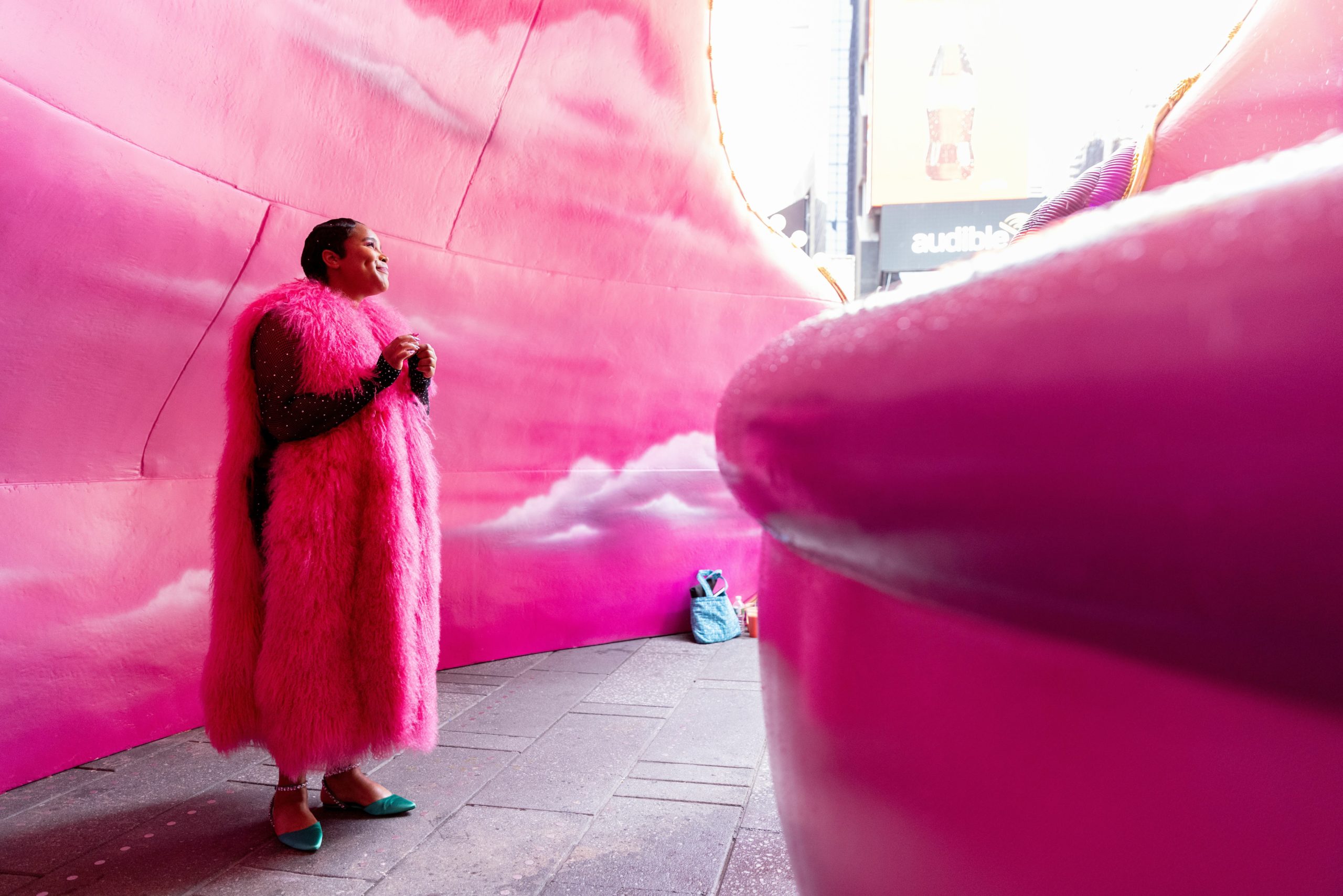
Amid glaring billboards, blaring horns and bustling crowds, New York’s Times Square is seldom a place of silence. But a new public art piece from Pamela Council aims to create a space that encapsulates visitors in sanctity.
“A Fountain for Survivors,” unveiled October 14 with the Times Square Alliance, brings a different type of incandescence, of warmth and lull, to a location otherwise devoid of personal space.
In the exhibit, a trickling fountain is enveloped by an 18-foot tall carapace bedecked with more than 350,000 acrylic fingernails, colored in hues of purple and pink. Council focuses on fountains in some of their work as cultural embodiments of public gathering, wish-making and hope.
This fountain, they said, is dedicated to Survivors, defined broadly.
“A Fountain for Survivors is a sheltered fountain in an iconic public space,” Council said. “On the topic of definition, Survivors know who they are; no one else can proclaim that for you. Conceived and created during a time when we are socially distanced, my goal with this work is to make a temporary monument that mirrors the experiences of masking and interiority that many have known, and which have now become a part of all of our lives.”
Council, who has a large extended family located across the South Fork, hopes to bring the piece home.
“My goal with the work is that it will return to the East End and have a permanent home there,” Council, who was born in Southampton, said. “We’re definitely Survivors of the East End.”
Likewise, the location of the fountain, in Times Square, has meaning — one Council parallels to the experiences of those living on the East End.
“You’re in Times Square … you see people going in and out of the theaters through the stage door — but less times the stage door is in the front,” they said. “I always talk about the Hamptons as a place that sort of has a front of house and a back of house.”
Council has roots in many of the arts institutions on the East End, growing up in Bridgehampton, East Hampton and Sag Harbor. As an elementary and middle school student, they said they participated in after-school programs at the Parrish Art Museum, Bay Street Theater, Guild Hall and Hampton Day Camp. Their family still resides in the area.
“One of the things that I’ve really learned from my experience growing up there is the importance of saving space,” they said.
As the foot traffic of Times Square and Broadway theaters timidly recovers from the coronavirus pandemic, Council remarked that this moment of transition is particularly special for them and their work.
“So many of the people traveling through Times Square right now are not tourists, but they are the people who make it run,” they said. Council’s work, a space for solitude, has specific value for these “back of house” workers.
The use of acrylic nails — that mosaic around and cover the fountain — is likewise meant to provide survivors a space for recess.
“I really just fell in love with the nail formally and also as a site, both architectural and conceptual, for exploring them identities across cultures,” they said.
Council further engages in the acrylic nail on Times Square’s billboards. Their work, “Talking Hands — Watch My Nails Don’t Watch Me,” uses many of the screens as a medium to display long fingernails in motion. Their work is shown at midnight every day.
“Long fingernails get your attention—hypervisibility,” Council said in a press release for that exhibit. “They also give the person wearing them access to a whole new language and way of carrying on.”
Council uses the term “Blaxidermy” to describe some of their work, including the acrylic nails in the fountain. They described the term as a “Black vernacular camp aesthetic,” in a 2020 interview with Hyperallergic.
To build the structure, Council said they hired New York City nail artists to design and detail each acrylic nail.
Kathy Engel, a professor of art and public policy at New York University’s Tisch School of the Arts, has known Council since childhood. Engel took one of her classes to visit the structure recently.
“The notion of with all the history of fountains to make a fountain for survivors … I’m just really so moved and overwhelmed by this work,” Engel said. “This work along with many … embodies and entices and opens up so much of what that ‘arts politics’ is.”
Council aims to bring the work to a permanent home on the East End. They said they draw particular inspiration from Brenda Simmons, co-founder and executive director of the Southampton African American Museum.
“My work is always toward an effort for reparation, restoration and remembrance. I’m so grateful for the work that Ms. Brenda Simmons is doing in Southampton and the work that she has done to archive and make a home for our history,” Council said.
In bringing the work to the East End, Council said they aspire to follow in Simmons’s footsteps — making a home for Black history in art form on the South Fork.
To do so, Council said they need the land and the space for “A Fountain for Survivors.”
“It’s really a call to action at this point,” they said. “Give me some land to put my work on so that I can return home and have a home back home — and a place to help continue to build the culture of the East End.”